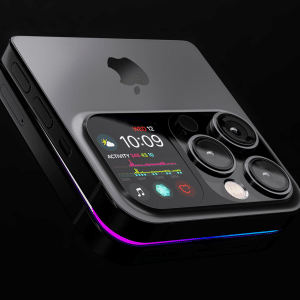A recent report from Taiwanese research firm TrendForce, and corroborative statements from other sources, suggest a concerted effort by Apple to transition to microLED displays across its product lines, moving away from dependency on current suppliers like Samsung and LG.
Early production activities and extensive research into custom microLED technology mark Apple’s ambition to bring these displays to a wide array of products. TrendForce reiterated its earlier statement that Apple’s first microLED display, which is expected to be 2.12-inches in size, a 10% increase from the current Apple Watch Ultra, will debut in a new Apple Watch Ultra model in 2026. The postponement to 2026, rather than 2025, is attributed to adjustments in the supply chain.
In a report by Bloomberg’s Mark Gurman, it was also suggested that Apple’s long-term strategy involves integrating custom microLED displays into the iPhone, iPad, and Mac, although the latter could take up to a decade due to the complexity of the technology at its nascent stage.
Gurman’s observations provide context, noting that the first iPhone with an OLED display – the iPhone X – was launched in 2017, but there has still not yet been an OLED iPad (although recent speculation points to this finally happening in the first half of 2024). Additional reports from DigiTimes, Nikkei Asia, and The Information have further emphasized Apple’s plan to make this significant transition.
Apple has reportedly invested more than six years in developing microLED technology, marking the first time the company has custom-designed a display, a move that mirrors its work on Apple silicon. The microLED project, codenamed T159, began in earnest around 2017. Initially, there was even a desire to introduce the technology with the iPhone X. The merits of microLED are notable; it offers enhanced brightness, color reproduction, and viewing angles, enabling images to appear as though they are “painted” on the display glass.
The shift towards custom microLED displays signals a considerable strategic change for Apple.

By moving away from suppliers like Samsung and LG and developing proprietary technology, Apple seems poised to achieve greater control over the quality and innovation of its display components.









